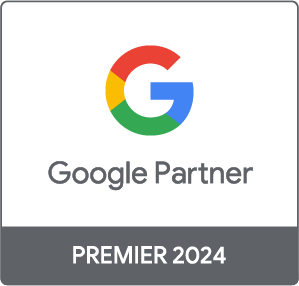How to navigate privacy focused audience targeting

Privacy is at the heart of many conversations surrounding marketing in the increasingly AI-led online world. The future seems to be geared towards a new dimension, one that prioritises privacy and user consent.
Welcome to the world of privacy focused audience targeting. This article will take you through the journey that users, Google and online marketers have been on over the last few years. Taking you from the traditional cookie and keyword days of the past, to the elevated AI optimised future of tomorrow.
Read on to demystify everything to do with privacy focused audience targeting, with some helpful tips along the way:
- What is privacy focused audience targeting?
- Where did similar audiences go?
- What replaced similar audiences?
- The benefits of privacy focused audience targeting
What is privacy focused audience targeting?
Privacy focused targeting is a strategy of connecting with your audiences via paid ads, in a way that is more respectful of their privacy.
It’s come about thanks to a couple of major changes that have been happening over the past few years:
- Users’ increased concerns surrounding online privacy, with a focus on cookies and the abundance of data that can be tracked.
- Google’s decision to phase out cookies by 2024.
- A lack of control for marketers over the reliability of data acquired from cookies, for use in online marketing.
Basically, traditional online marketing data collection methods like third-party tracking are being replaced with first and zero-party data options, where consent is knowingly given by the user.
Enter contextual targeting; a way to target online ads to users based not on their user data, but on the content of landing pages and existing real-time data. Modern contextual targeting options involve AI, using first-party datasets to their advantage.
Where did similar audiences go?
Remember similar audiences? Similar audiences were a key feature of Google Ads that helped marketers target their ads to users who shared characteristics with their existing site or customer lists. These metrics would be based on the various demographics, interests and behaviour of users.
Google’s strategy has been going through some significant changes. It used to be focused on bringing in audiences who shared similarities with existing users who had interacted with your brand in the past. Now, the focus is much more geared towards specific user groups who have had a higher conversion rate.
Towards the end of 2023, similar audiences was replaced by optimised targeting.
What replaced similar audiences?
Optimised targeting is a new targeting function that aims to narrow the potential audience for your campaign, focusing on the users who are most likely to convert. This is done using real-time conversion statistics like recent search queries or keywords used by customers to recently complete a purchase.
It identifies new audiences for your campaigns, through tried-and-trusted keyword data, but also uses media assets like your landing pages and existing copy on your website. Once it’s taken a look at your site, keywords and creative assets it finds audiences for your campaign, based on your campaign’s goals.
By the way, optimised targeting is turned on automatically for all of your campaigns. You can easily toggle it off if via your ad group settings you want to A/B test your options.
You can add manual inputs to your optimised targeting, such as keywords or audience segments. These are often also referred to as “targeting signals”. Optimised targeting then takes these signals and uses them as a template and a foundation to build upon, pulling in more traffic based on that original criteria.
Audience expansion vs optimised targeting
It’s important to note the difference between these two elements of Google’s PPC platform. They share some similar attributes, but their differences are significant and hide the key to their best-use scenarios.
- Audience Expansion: Aims to broaden the reach of your campaigns through targeting users who share similar characteristics to existing audience segments. It’s more likely to lead to an increase in clicks, impressions and conversions overall.
- Optimised Targeting: Aims to maximise conversions for your campaign through tailoring who your ads are presented to. This is based on real-time campaign conversion data such as recent search behaviours of customers.
Benefits of privacy focused audience targeting
This fresh approach to audience targeting comes with a wealth of benefits:
Real-time conversion data
The key feature of optimised targeting is the access to real-time conversion data. This is set to elevate your campaigns at lightning speed, so you’re no longer simply making strategy decisions based on a small data set from an existing campaign alone.
Audience insights
Google provides some topline data and insights to whichever audience groups are performing well in your optimised targeting campaigns. These insights include unique characteristics, behaviours and interests of the different user groups who convert via your ads, making a purchase or aligning with any other campaign goal.
Reaching new customers
The entire aim of optimised targeting is to help you reach the right audience to maximise conversions. Within that comes a tempting offer: finding new audiences that you might not have previously thought to market to. Thanks to the additional assistance of AI.
Making use of landing pages
Part of the optimised targeting comes from a crawl of your website’s landing pages, taking keywords and copy into consideration automatically. This means that your hard work on crafting the best ad copy and strategic brand identity is carried forward into your ad campaigns at no extra cost of time or effort to you.
AI and manual optimisation
Optimised targeting brings together both the automated analysis of existing conversion data with your personal input to help guide your optimised traffic parameters. Add in audience segments and keywords so you can refine as you go. It’s the best of both worlds.
In Summary
The beginnings of this privacy-focused audience targeting marks a significant departure from what we recognise as conventional marketing tracking practices. But this change has come about due to current and highly relevant concerns surrounding online privacy.
At the end of the day, knowing how to serve relevancy to your customers through the ads that you show to them is a win-win. If you can also find a way of doing that without compromising privacy, all while making use of the latest AI features of Google Ads, you’re set for success.
This area of online marketing is set to evolve over the coming years. Welcome to the start-line; your customers will be happy to see these updates, made with their privacy in mind.








